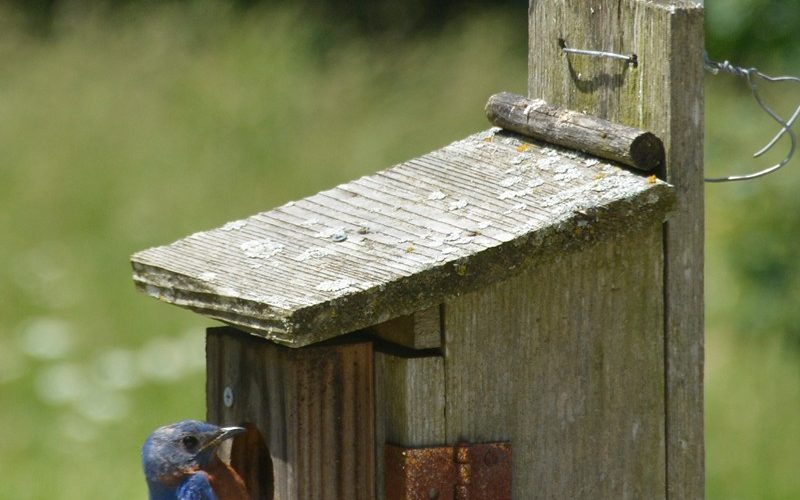Monitors can help bird populations
AMANDA BANCROFT
Making Ripples
As of this writing, the season’s first clutch of bluebird eggs has hatched, transforming a tan nest cup filled with sky blue eggs into a cupful of five sleepy bluebird chicks! As a nest monitor, I observe these feathered families and watch the babies grow up. Sometimes, it’s like a joyful holiday to see the entire brood fledge one by one into their wild future. Rarely, none of the eggs or young survive, and I witness the family’s struggle. But regardless of one nest’s outcome, monitoring nests is helpful to these birds as well as scientists.
I count the number of eggs and fledglings for the Cornell Lab of Ornithology, which maintains the NestWatch citizen science program. It’s free and fun for all ages! Visit NestWatch.org to find information on identifying birds and nests, how to build bird boxes and install nest cameras, manage predators or competitors, and learn which species you might attract. Some species prefer natural nest cavities or bushes and other habitat, but many, like the eastern bluebird, prefer nest boxes or are happy either way as long as there is space somewhere for them to successfully raise their broods. You don’t have to have a box to be a monitor.
Nest monitors go through four steps from start to finish. First, we become certified online with a test administered by NestWatch. Next, we search for nests created by songbirds – these can be anywhere from porches to bushes. Many monitors also choose to install nest boxes. We visit these nests every few days, maintain the boxes where necessary and record anything we observe, including the parent birds’ activity. Finally, monitors submit their data to NestWatch online. There is a handy manual you can download which helps monitors avoid three common risks: parental desertion of a nest, attracting predators to a nest, or accidental harm to the nest or young.
Whether or not you decide to register as a monitor and report data, it’s important to be an ally to birds. Don’t touch or handle eggs or young because they are extremely fragile. And it is illegal to take or possess migratory birds, their nests, or their young under the Migratory Bird Treaty Act. It’s best to visit nests in the late morning or afternoon because egg-laying occurs in the morning, when females should not be disturbed. Avoid visiting at dusk or dark, or when the weather is cold or raining. If the female leaves her nest during a monitoring visit in these conditions, it can stress the family or cause the young to become too cold.

Eastern bluebirds prefer nest boxes, but you don’t have to have a box to be a friend to birds.
(Courtesy Photo/Amanda Bancroft)
If you do put up a nest box, use predator guards, clean out old soiled nests to prevent disease, apply soap on the inside walls and ceiling to deter wasps and Vaseline on the pole to stop fire ants. The program offers much more detail and support. Flap on over to NestWatch.org to learn more and start observing your own feathered families!
Amanda Bancroft is a writer, artist, and naturalist living in an off-grid tiny house on Kessler Mountain. She and her husband Ryan blog about their adventures and offer tips to those wanting to make a difference at www.RipplesBlog.org.










